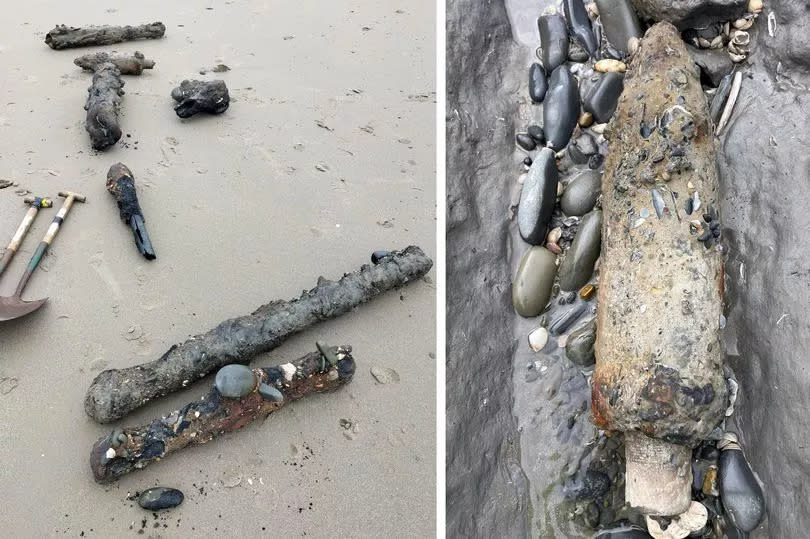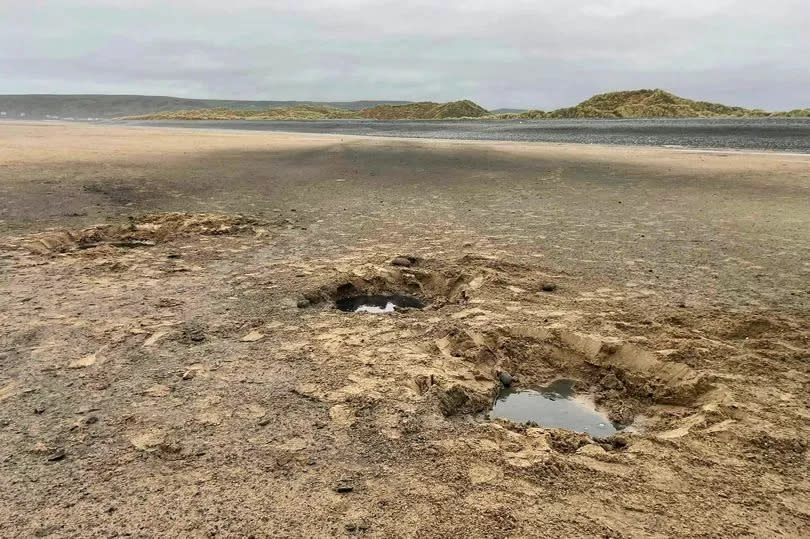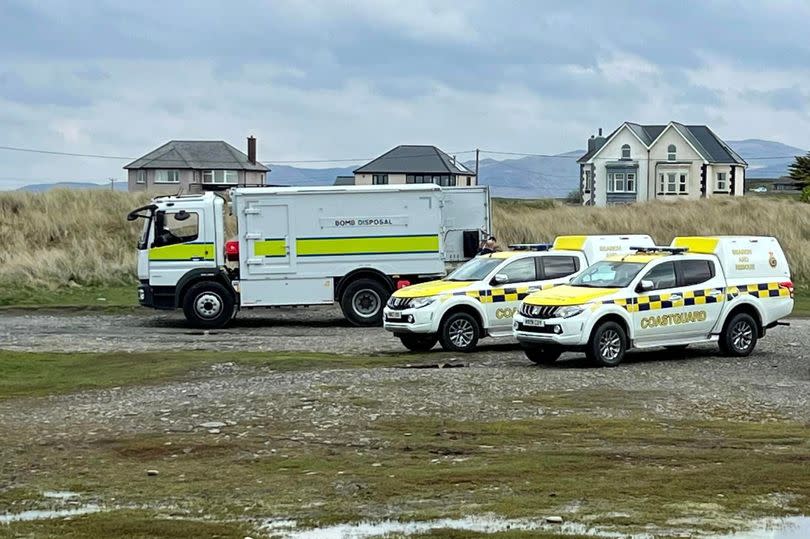Bomb squad explodes dangerous 'top secret' missiles found at Welsh beach
Bomb squad soldiers have carried out a series of controlled explosions on a west Welsh beach that was once a top-secret weapons facility. Several items of WW11 ordnance were discovered on a stretch of shoreline just outside Eryri (Snowdonia).
Coastguards have repeated warnings for the public to be careful when visiting Traeth Ynyslas, which lies across the Dyfi estuary from Aberdyfi, Gwynedd. During the Second World War, the beach was closed off for guided missile testing and experts say old munitions could still contain explosives.
It’s thought that high and low spring tides combined with recent storms exposed more items on the sand. One piece of ordnance was discovered by a caravan owner from nearby Borth, Ceredigion, and a second batch by members of the public.
READ MORE: Dad and son find bones on Welsh beach and take them home - then realise they're human
READ MORE: Major U-turn on 20mph speed limits signalled for Wales
On each occasion, HM Coastguard teams from Borth and Aberystwyth set up cordons around the corroded items while were above the water line. Controlled explosions were carried out by the Army’s Emergency Ordnance Disposal (EOD) unit.
On social media, HM Coastguard Borth said: “The area round Ynyslas has been used extensively in the past for munitions testing and so items of ordnance are found fairly regularly here. No matter how corroded they may seem they can potentially still contain explosive material. So, if found, please do not disturb items of potential ordnance but call 999 and report to the Coastguard.”
Munitions were said to have been dumped at sea off Ynyslas beach after the testing range was decommissioned. Items of Unexploded Ordnance have been found ever since. In one case, live ordnance was used as a games prop by local children. Another controlled explosion was carried out in 2021 - you can see this here.
Now a National Nature Reserve, in the latter years of WWII Ynyslas hosted a “hush-hush” military research base (the Ministry of Supply Experimental Establishment Anti-Aircraft) to test rockets propelled by liquid fuels. This was a response to Germany’s long-range guided rockets – the V1 and V2 – which devastated London between June 1944 and March 1945. Sign up now for the latest news on the North Wales Live Whatsapp community


During the site’s construction, HMS Camroux III, a small coaster converted with rocket launch ramps, was anchored at Aberdyfi to provide billets for army officers. The foreshore was marked out with a target grid for unrotated rocket projectiles – a short-range anti-aircraft weapon developed for the Royal Navy designed at the behest of Winston Churchill. Local people were told to stay away.
The facility closed in late 1946 and testing was transferred to Aberporth, then overseas. In 2012, its purpose was finally detailed by the Ancient and Historical Monuments of Wales (RCAHMW). Sign up for the North Wales Live newsletter sent twice daily to your inbox
The heritage body said: “Few visitors to the Ynyslas National Nature Reserve are aware that they have entered one of World War II’s most secret research facilities – a weapons-testing range that once played a vital role in the development of rocketry, space travel, and all the associated inventions, from home insulation to heart-pacemakers, which have radically changed the world we live in today.”


On March 26, a remnant WW11 munition was found on the beach and was subsequently blown up. Last week (April 10), several more items were discovered and these were also detonated remotely, leaving a series of blast holes on the beach.
On seeing photos of the ordnance found on the beach, one man warned: “They look deceptively safe. Just rusty bits of metal. Often the case has corroded and the main explosive washed out.
“But they are very likely to have a small detonator fitted, which was used to set off the main explosive. That is often encased in a metal that has not corroded through with time.
“Detonators by their nature are more unstable than the main explosive. That instability tends to get worse with age. If a detonator goes off while you are handling these ordnance you could well lose your hands. Also the shrapnel will likely make a mess of your face.
“So as the Coastguard has said, please, please, report any unusual-looking objects on Ynyslas beach. Better safe than sorry.”
Find out what's going on near you

 Yahoo News
Yahoo News 
